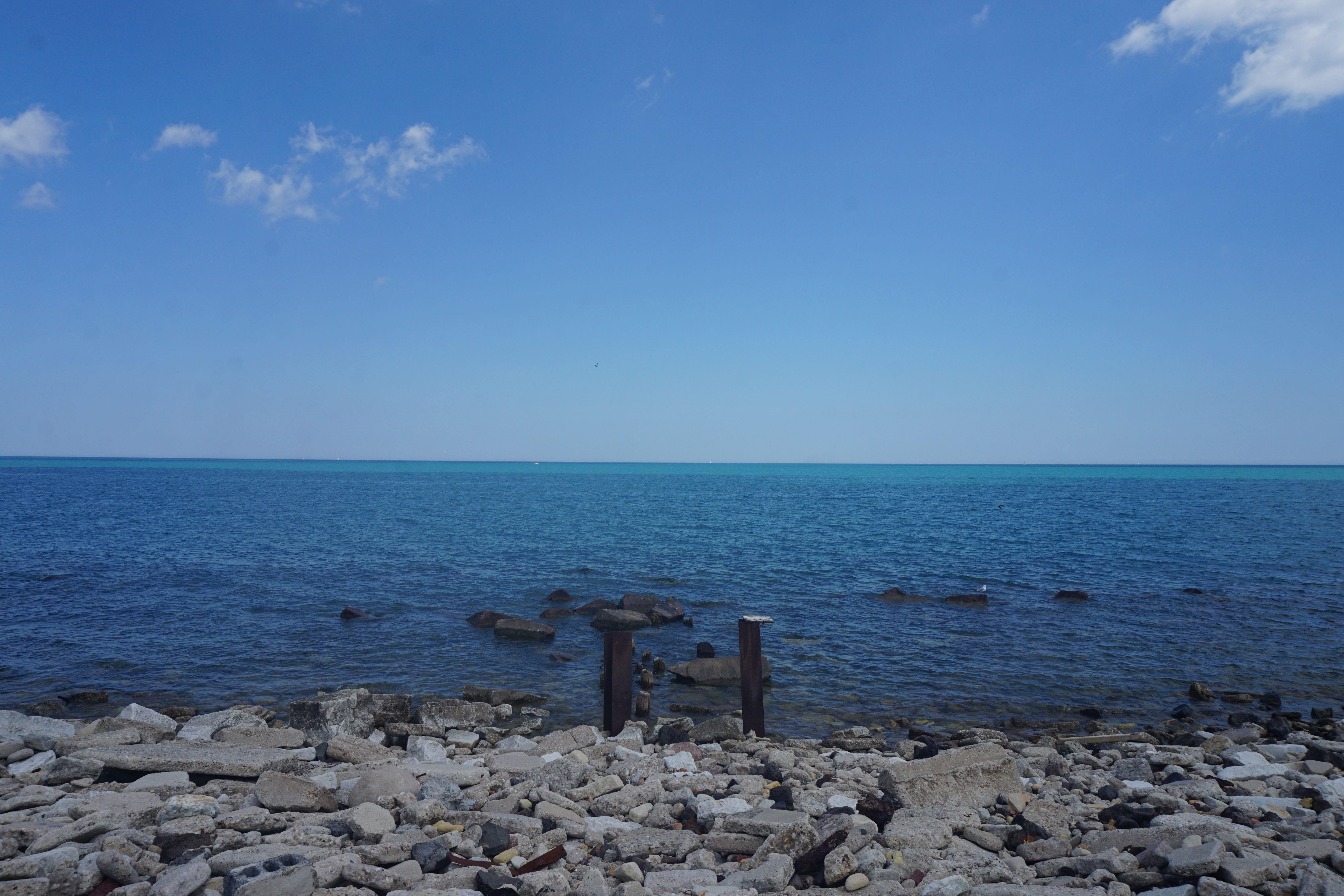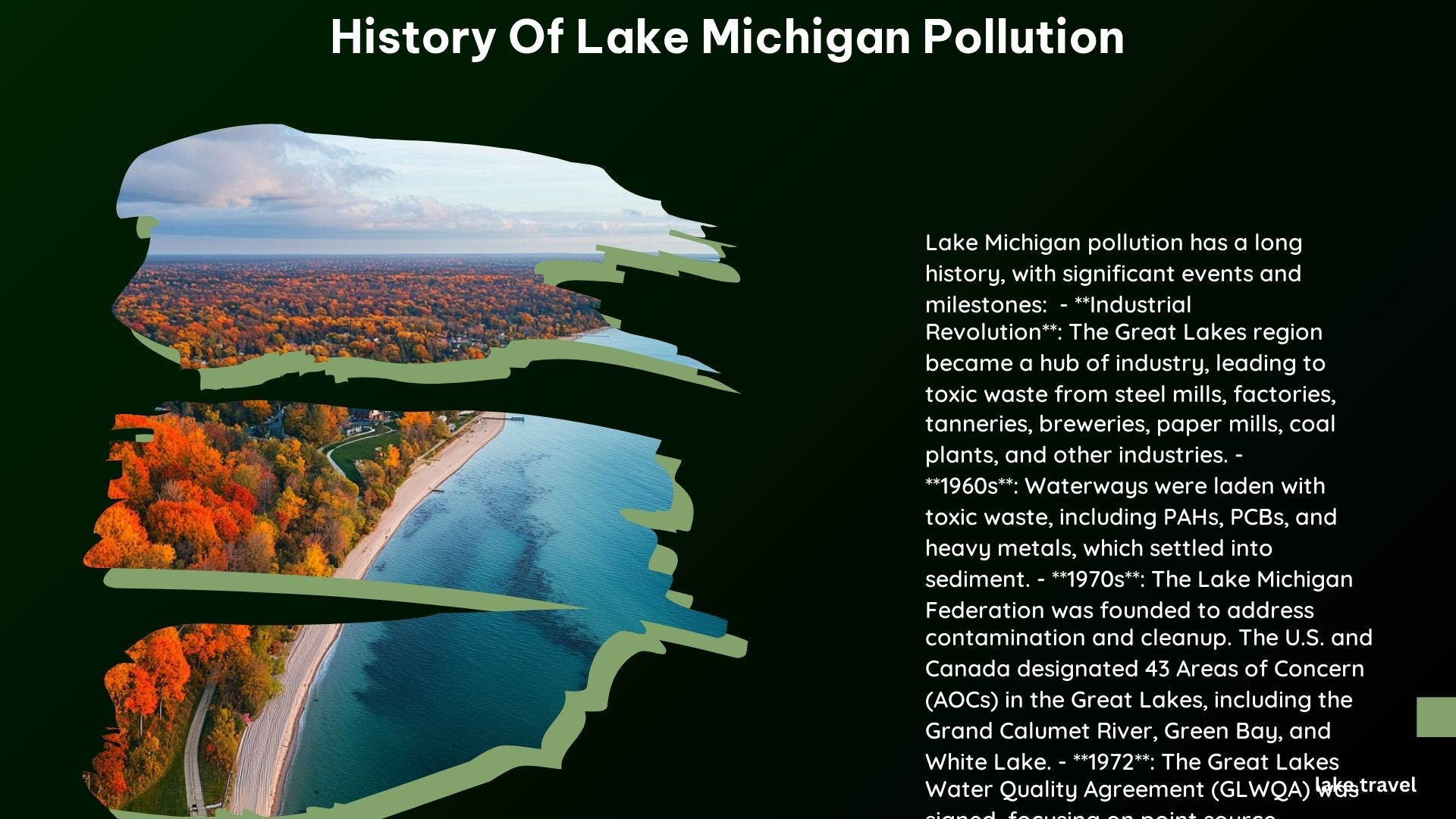The history of Lake Michigan pollution is a complex and multifaceted issue that spans several decades. The Great Lakes region, including Lake Michigan, was heavily industrialized, leading to the release of toxic chemicals, heavy metals, and other pollutants into the water. This pollution had a significant impact on the ecosystem, fishing, and drinking water for millions of people.
Major Pollutants and Decline in the Late 1900s

Industrial Contamination
The steel mills, factories, tanneries, breweries, paper mills, and coal plants in the region were significant contributors to the pollution of Lake Michigan. These industrial facilities released a wide range of toxic chemicals, heavy metals, and other pollutants directly into the lake.
Phosphorus and Nutrient Pollution
Excess nutrient loading from phosphorus and nitrogen was a major concern, leading to algal blooms and low-oxygen conditions in Lake Michigan. This had a detrimental impact on the aquatic ecosystem and wildlife.
Oil Pollution
The Detroit and Rouge rivers, which flow into Lake Michigan, were heavily polluted with oil and other petroleum products, causing significant environmental damage and wildlife mortality.
Pesticides and Heavy Metals
Chemicals like DDT, PCBs, and mercury were released into the lake, accumulating in the food chain and causing harm to humans and wildlife.
Impact of Industrial Plants and Dumping

Toxic Chemicals
Industrial plants dumped toxic chemicals directly into Lake Michigan, contributing to the decline of its water quality.
Sewage and Waste
Municipal sewage and industrial waste were released into the lake without proper treatment, further exacerbating the pollution problem.
Consequences of Pollution
Impact on Fishing
Pollution led to the decline of fish populations and the closure of fisheries due to mercury and other toxic substances.
Drinking Water
The pollution of Lake Michigan threatened the safety of drinking water for millions of people, with chemicals like PCBs and mercury accumulating in the food chain.
Ecosystem Health
The pollution of Lake Michigan had a significant impact on ecosystem health, with algal blooms, low-oxygen conditions, and the decline of aquatic life.
Efforts to Address Pollution
Great Lakes Water Quality Agreement
The 1972 agreement between the US and Canada aimed to reduce phosphorus loadings and visible pollution, leading to improvements in water quality over time.
Regulations and Cleanup
Regulations on industrial pollution, the creation of the Environmental Protection Agency, and cleanup efforts have contributed to the reduction of pollution in Lake Michigan.
